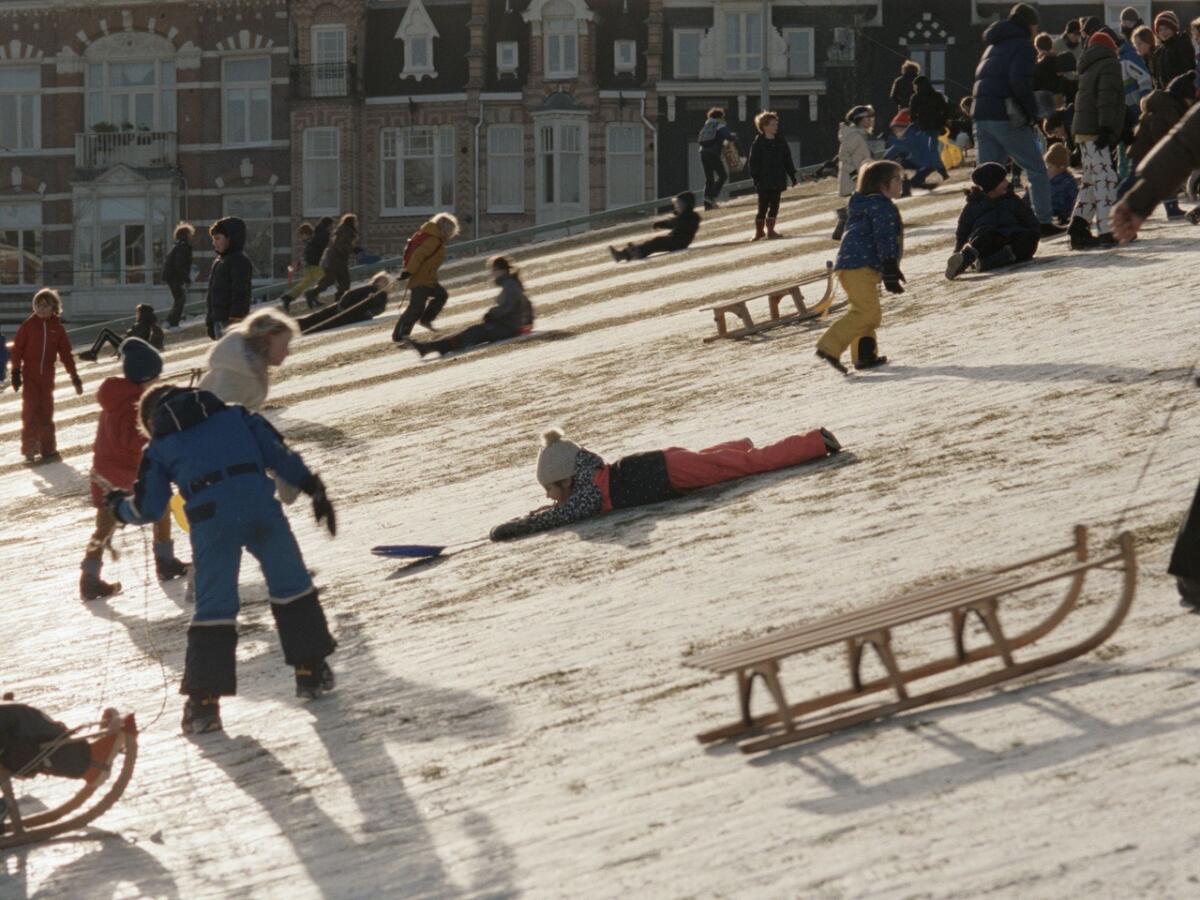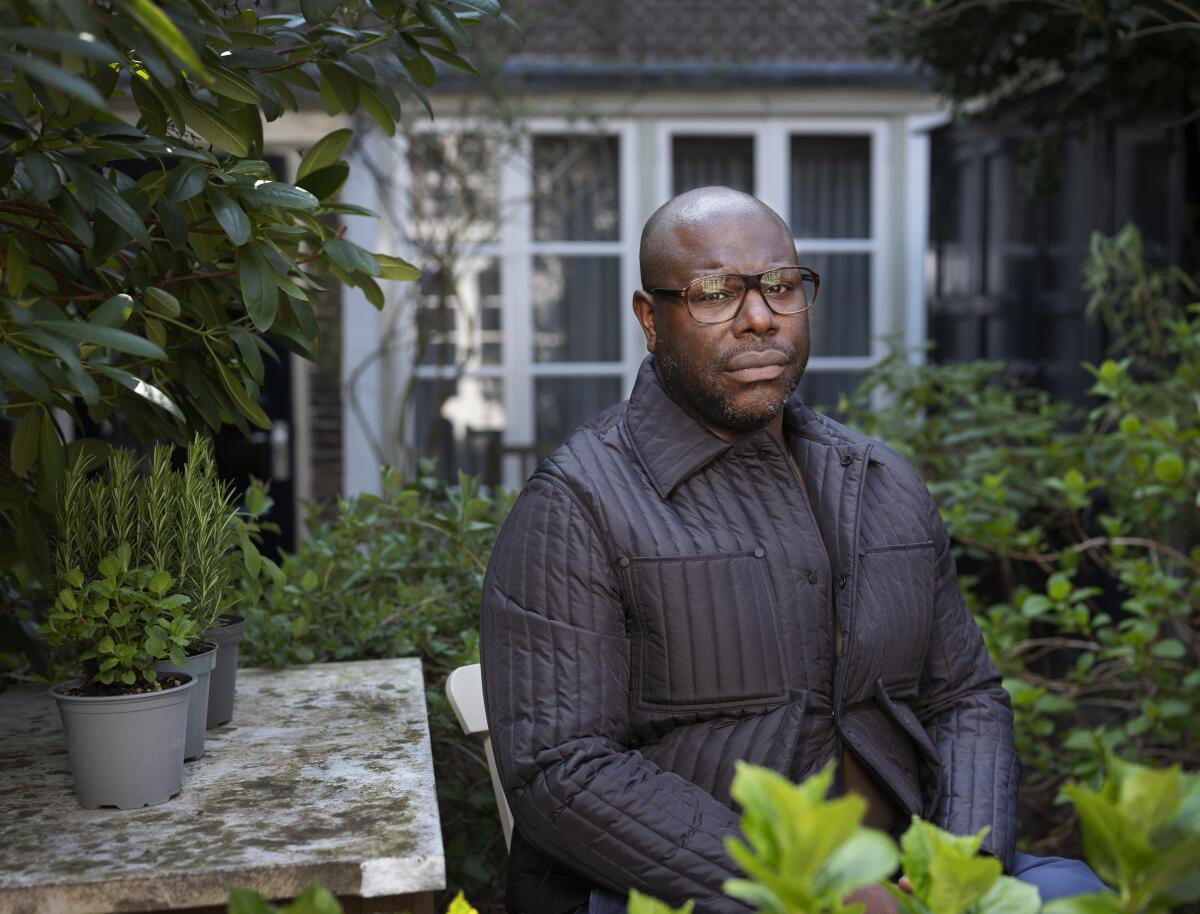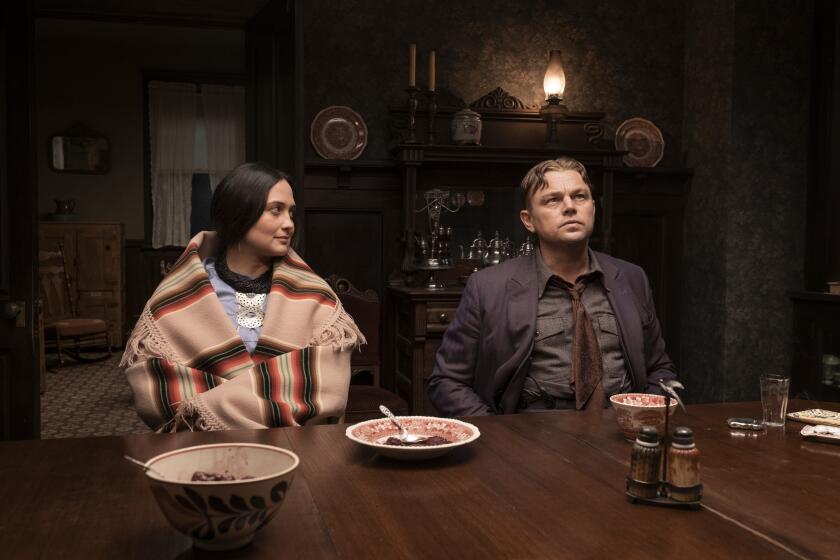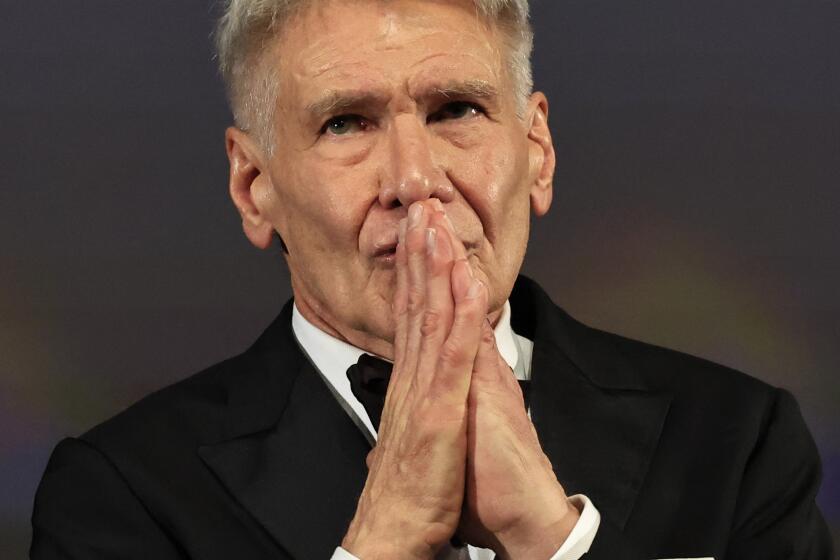It’s hard to watch a 4-hour documentary on Nazi-occupied Amsterdam. That’s the point

- Share via
CANNES, France — British director Steve McQueen knows his documentary “Occupied City,” which premiered on the first day of this year’s Cannes Film Festival, may not be what people expect. From him, or from a documentary.
The form is well represented at this year’s festival — there are three in competition — but none is as epic in scope or avant-garde in structure as McQueen’s.
Based on the Dutch-language book “Atlas of an Occupied City, Amsterdam 1940-1945,” by his wife, Bianca Stigter, it is a four-hour-plus, street-by-street, building-by-building chronicle of what happened in Amsterdam during the German occupation and what each of those places looks like now.
As the camera captures modern scenes of specific locations all over Amsterdam, narrator Melanie Hyams describes how each figured in the invasion, occupation and deportation of 80% of the city’s Jewish residents, many of whom were murdered in concentration camps.
It is a challenging film to watch and not just because of its subject matter, or even its length. The normality of the modern scenes, gorgeously shot on 35 millimeter, inevitably offers a disturbing contrast with the narration — a busy school that served as a torture center, a cozy apartment where a Jewish family was discovered and sent to a camp, people ice-skating on frozen canals where the bodies of those who died in hiding were dumped and where many died by suicide.
One contrast after another after another pits your eyes against your ears until it is difficult to keep the images from distracting from the text, and vice versa, to know how to process the information. Are we supposed to be concentrating on the trees or the forest?
This is precisely the effect McQueen planned.
The British-born filmmakers Jonathan Glazer (‘The Zone of Interest’) and Steve McQueen (‘Occupied City’) have made two of this year’s essential Cannes Film Festival titles.
“The way Bianca wrote the text was very factual, so I knew I wanted that — not uncompassionate but matter-of-fact, and then we’re moving on,” he said. “The weight of what happened was so heavy you can’t hold it in your head forever. If you forget things that’s OK because of the magnitude.... It’s a lot to juggle. Like a classical concert, you drift away in one place and come back into another and that’s part of the experience. ‘Occupied City’ is an experience.”
“Not a history lesson, an experience,” Stigter said. “Seeing the film, you are aware of the past that is around you. You cannot activate it all the time, but sometimes it’s interesting to see past and present colliding.”
The two have joined me in the restaurant of the Hôtel Martinez just off the Croisette. A power couple by any standards, they are thrilled by the film’s reception at Cannes, and happy to be where, as McQueen says, “films are having conversations with each other.” “Occupied City” was born of their shared, and separate, experiences; Stigter is a native of Amsterdam; McQueen has lived there for 25 years.
“Growing up in London, an unoccupied city,” he said, “it was a change to be living in Amsterdam, looking around on a day-to-day basis and realizing, ‘Oh, here’s where that happened.’ … It wakes you up.”

The book, and by extension the film, began with a question from Stigter’s father. “I was studying history and he wanted to know what actually happened when the Germans came to Amsterdam. How did they know where to go, what to do? And I didn’t know the answer,” she said.
Although “Anne Frank: The Diary of a Young Girl” made Amsterdam one of the war’s most famous occupied cities and the house in which the Franks hid is now a museum, Stigter was surprised at how little information was available. “I realized there were only a few places [where] people knew what happened during the war. I thought I’d write a travel guidebook, house by house, floor by floor.”
She took on the daunting task piece by piece, reading a lot of books, going into archives of documents kept by the Germans as well as those of the Jewish Council, which included a 1943 guidebook detailing hiding places, council members’ homes, headquarters of clandestine newspapers and other key locations of the Resistance.
The searing, sprawling ‘Killers,’ which premiered Saturday at Cannes, is both like and unlike anything its director has ever done.
As Stigter was writing, McQueen first thought: “Wouldn’t it be interesting to get footage from the ’40s and contrast it with today? Then I thought, how great to have the past as text and the living as presence. Our daughter’s school was headquarters of the SS — the whole point, to have living and dead in same frame, to get the present to connect to the past.”
He began shooting in 2019 and, like the rest of the world, was locked down for a time by COVID-19. Indeed, much of the footage serves as a chronicle of the pandemic — a city shutting down, early vaccination stations, anti-vaccination protests, and people partying in defiance.
“It seemed like in that three years, everything was going on,” he said. “Black Lives Matter, climate change, the Ukraine, COVID itself.”
At certain points of the film, the sight of police controlling protesters strikes an alarming contrast to the narration detailing how, in that very spot, Jews and others were rounded up for deportation.
“That’s what happened,” McQueen said, objecting to the notion that he was in some way comparing the two things. “Things change. You have people protesting and you cut to police standing around. The narrative has changed.”
“You get to decide that it’s not the same,” said Stigter.
“Our liberty did not come cheap,” McQueen added. “There is an amnesia about what happened for our freedom. This is to remind people of that.”
“I just saw my life flash before my eyes,” Ford said at Cannes on Thursday, thanking wife Calista Flockhart and his “Dial of Destiny” collaborators.
McQueen and his crew shot for three years, amassing 36 hours’ worth of video that he says he will use “for another presentation somewhere else.” (Stigter is also hoping to publish an English-language version of her book.)
Many scenes take place in people’s homes, often with the residents present — in one a woman dances in her kitchen, in another a person works out on an exercise bike. Most of the people McQueen approached were happy to participate.
“They were interested in the subject matter,” he said, especially the famine that struck the Netherlands during the last winter of the war. “The Hunger Winter is not something people know about outside of the Netherlands.”
“My grandmother had a recipe for tulip bulb soup,” Stigter interjected. “It’s in the book.”
Only a few of those approached declined.
“Some people didn’t want to know what happened in their house,” McQueen said. “Some people like to put blinkers on. But life is not Disneyland. All three of us,” he said, including me in his statement, “got here through blood and tears. That’s how we came to this table. A lot of beautiful things happened too, but we mustn’t forget the blood and tears.”
Though not defined by blood and tears, McQueen has never shied away from them. Best known for “12 Years a Slave,” he first came to Cannes in 2008 with “Hunger,” a film about Bobby Sands and the 1981 hunger strikes in Northern Ireland; his 2021 docuseries, “Uprising,” made with James Rogan, examined the 1981 New Cross fire and how it illuminated and sparked racial tensions in Britain.
In “Occupied City,” however, he is not challenging us to remember so much as to recognize the inextricable relationship between the past and the present.
It is not easy to reconcile the ordinary sight of a jogger running through a park, tourists milling in front of a museum, or even a peaceful protest with the constant cataloging of families being yanked from their homes, groups of Jewish men being shot and babies being torn from their parents.
Even with an intermission, four-plus hours of horror take a toll.
“It’s the weight of the situation: It’s too heavy, and that’s part of the experience,” he says. “Film as a form isn’t done. You could do your normal documentary, but I’m using the material to see what I can do with it, pushing the form to communicate in a different way, to get people to engage.”
“It shows you that the past is not stable,” Stigter said. “It’s quicksand under us.”
“If you can rest easy, I’m not doing my job,” McQueen agreed. “Because I don’t want you to rest easy.”
More to Read
Only good movies
Get the Indie Focus newsletter, Mark Olsen's weekly guide to the world of cinema.
You may occasionally receive promotional content from the Los Angeles Times.













